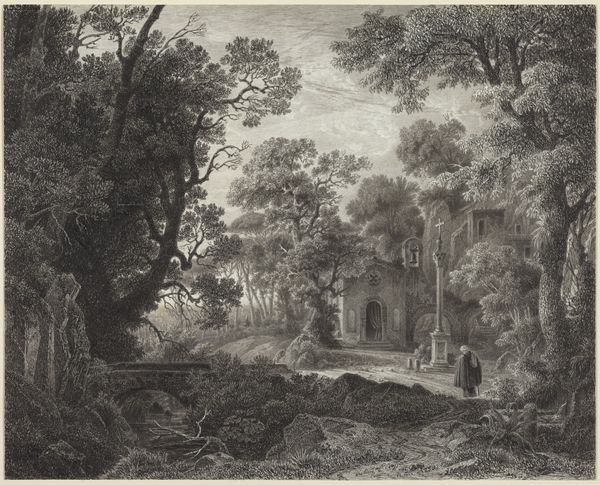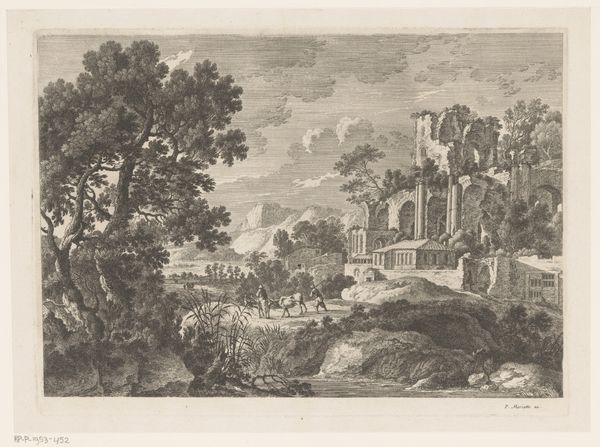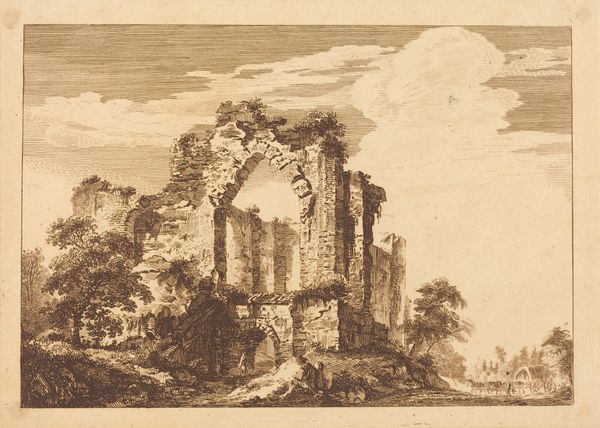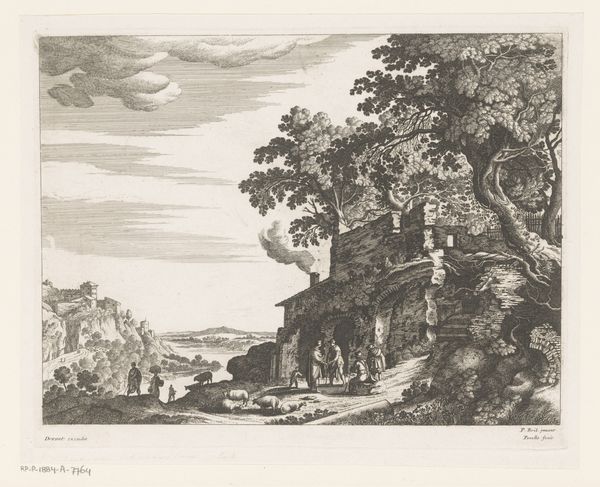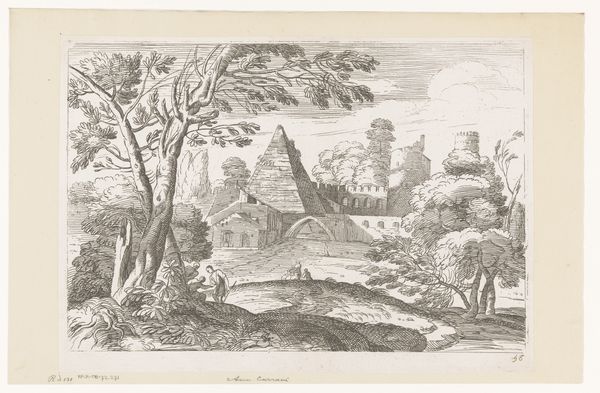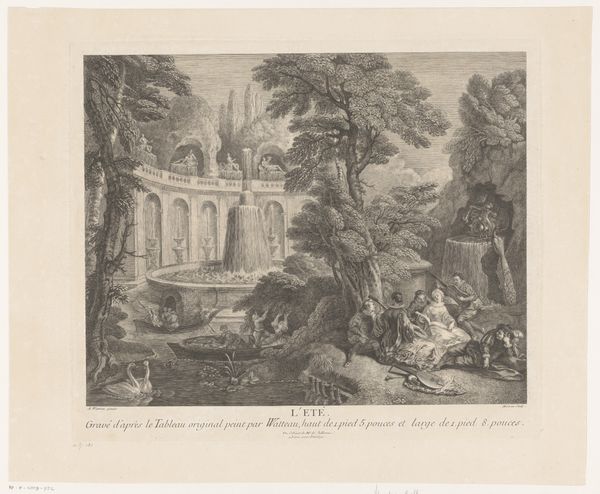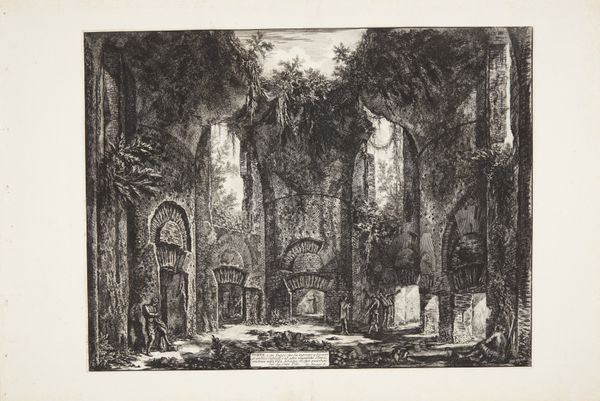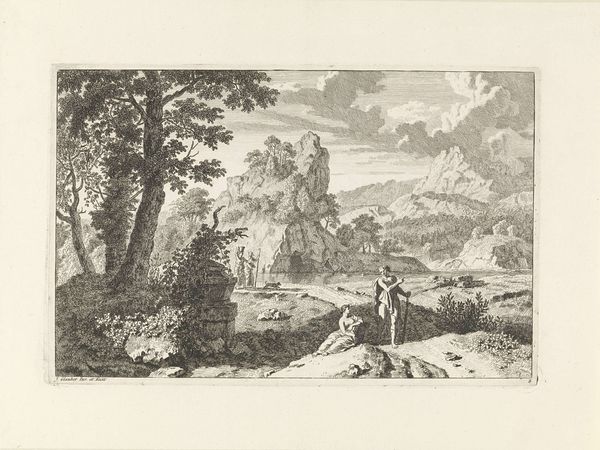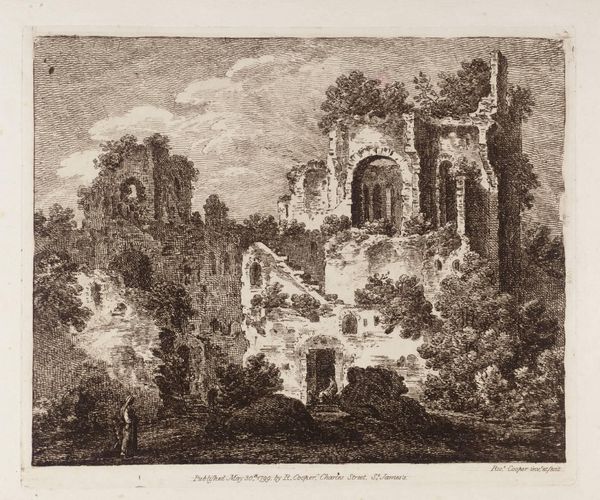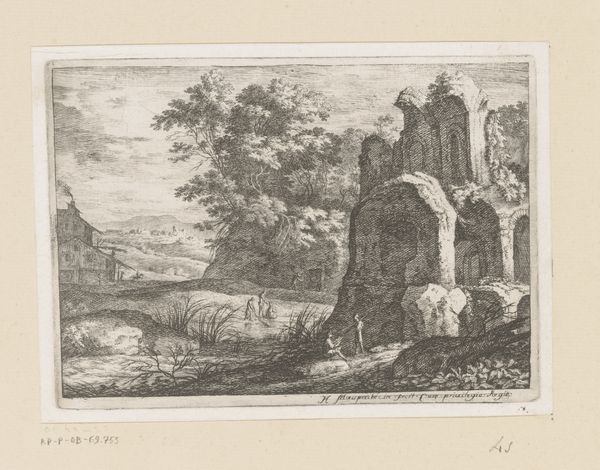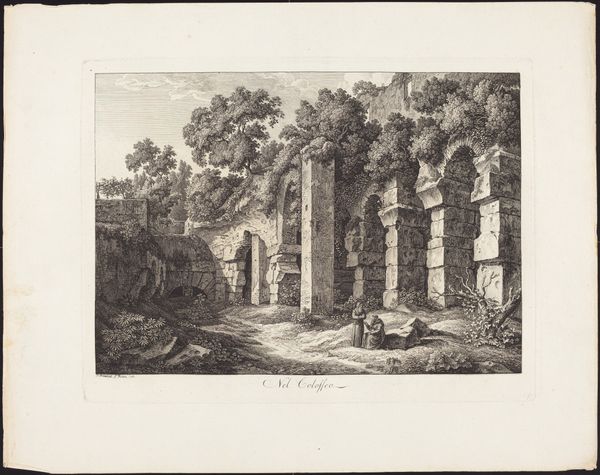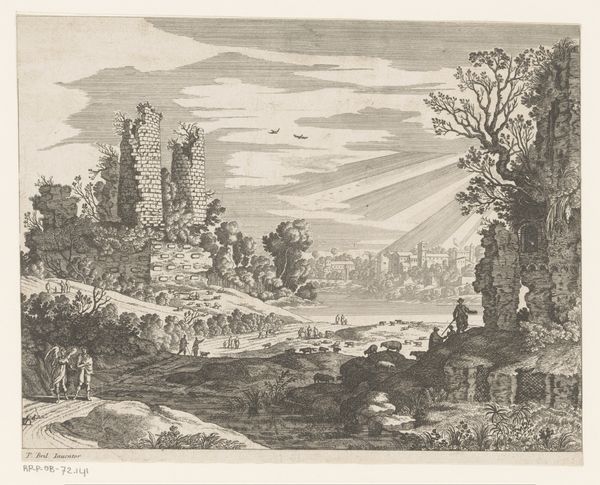
print, etching
# print
#
etching
#
landscape
#
romanticism
Dimensions: plate: 25.2 x 31.4 cm (9 15/16 x 12 3/8 in.) Overall: 31.3 x 42.3 cm (12 5/16 x 16 5/8 in.) overall (mat size): 40.6 x 55.9 cm (16 x 22 in.)
Copyright: National Gallery of Art: CC0 1.0
Editor: We are looking at “Riveaux”, an etching from 1825 by George Cuitt the Younger. The image depicts the ruins of what seems like a gothic abbey, overgrown with vegetation. There is a certain sense of melancholy conveyed through the image, and the artist plays with the romantic ideal of ruins. How might we interpret it from an art history standpoint? Curator: Well, this etching exemplifies the Romantic fascination with ruins, which became incredibly popular in the late 18th and early 19th centuries. This interest in ruins reveals larger ideas about time, history, and the perceived grandeur of the past contrasting with a fading present. What strikes you about the setting? Editor: The sheer detail in rendering the decay, perhaps. You see the arches falling apart, nature reclaiming everything, all very picturesque. The composition itself, with the contrast between light and shadow, adds to the atmosphere. Curator: Exactly. The image also embodies a kind of political sentiment. Consider the history of religious institutions in Europe; their suppression and dismantling became physical manifestations of broader shifts in power and cultural values. What role do you think prints like this played in shaping public opinion and memory? Editor: Maybe they acted as a sort of visual document, reinforcing ideas about the passage of time, political upheaval, and even religious change. This artwork highlights the transformations happening around that period, making a connection with audiences through striking visuals. Curator: Precisely. It invites the viewer to reflect not only on the visual decay before them but on the very forces that brought it about. It's a dialogue between past, present, and, potentially, future societal structures. Editor: I never considered it as having such implications. Thank you for helping to unpack this piece; I’ve certainly learned a lot about interpreting its social context! Curator: My pleasure! It’s these contextual layers that give art its depth and enduring power to spark dialogue.
Comments
No comments
Be the first to comment and join the conversation on the ultimate creative platform.
